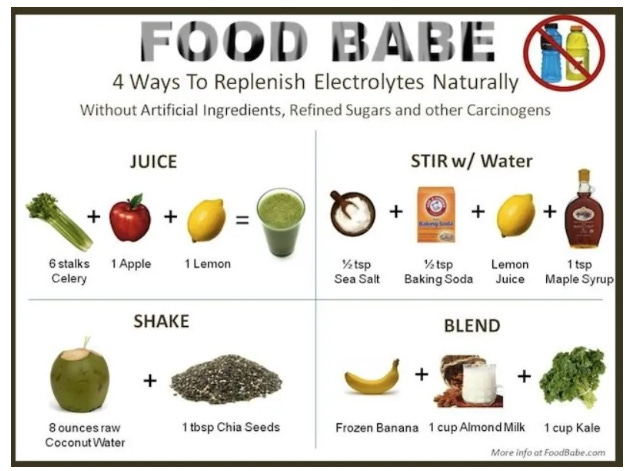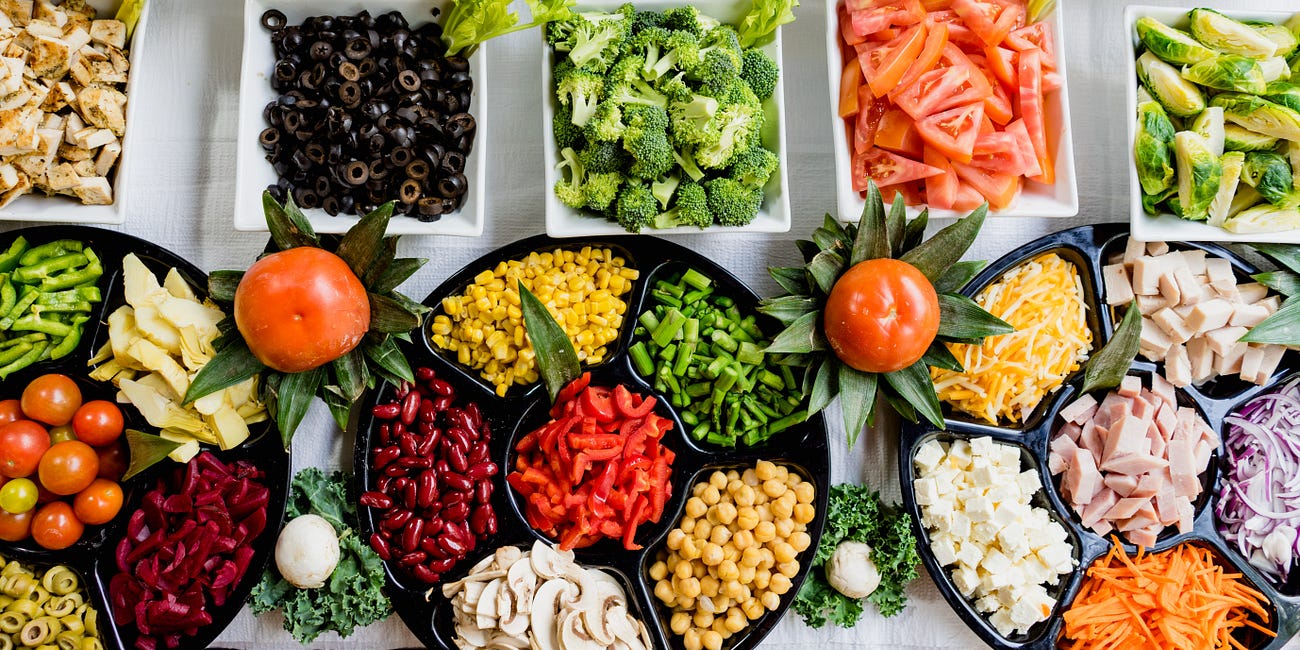#254: Why Commercial Sports Drinks Are A Concern and What Can We Do About It.
Sports drinks are a massive industry with an equal impact on our health. Let's explore.
In the NHL hockey playoffs have you noticed the brand on the players water bottles and sweat towels have changed? Just as the playoffs started last week, a new sports drink partner hit the scene. This was in response to the former sponsor, Biosteel, filing for bankruptcy protection in the fall of 2023. Bringing this up highlights the big business nature of sports drinks, its associated athlete sponsorships and its trickle down impact to young people.

The below article was first posted in The Physical Movement 3.5 years ago, and remains relevant today. Knowledge is power when it comes to sports drinks. Let’s dive in:
We only have to visit a player’s area after a game to see 1 impact of the sugary drinks on our young athletes. On the sideline, players bench or dugout a mass of empty bottles are all over or in a can overflowing.
We could talk impact on environment, or cleanliness habits but will save that for another day.
Let’s address the sugary drinks in our culture and its impact on our health, specifically our young athletes.
We will address from 3 points of view:
1. The business of sugary sports drinks and how they are marketed.
2. The impact of consuming them on our health, specifically our immune system.
3. Alternatives. Some of the facts around hydration and alternative strategies.
1. The business of sugary sports drinks
The concept was born in 1965 in Florida around a university football team. It was well received and connected to positive outcomes in competition. The earliest version of this beverage consisted of a mixture of water, sodium, sugar, potassium, phosphate and lemon juice. The athletic community in the USA started to embrace it and in 1969 it was licensed to a local food company to distribute. Pro football got involved with a licensing agreement at that time and, well, long story short this first sports drink was sold in 1983 for a 2nd time for $220 Million.
As of 2009, the university in question had received $150 million as its share and had receives about $12 million per year as part of ongoing royalties.
It was in the mid to late 1980’s when sports drinks, as a product, first hit the commercial market outside of this specific athletic community.
It was at then that significant dollars on athlete endorsement as part of their marketing strategy. The below was aired in 1992.
This was the early evolution of the sports drink and marked the beginning of a growth wave that is still happening 30+ years later (with no signs of slowing down).
Currently the sports drink market is expected to exceed $32 billion by 2026, and the number of competitors and their wars rage on in front of our eyes.
(To put that in perspective the USA Fitness industry is $28 billion currently. That includes all the people that go to the gym and accompanying businesses)
Over the years, the ingredients have changed to fit the needs of big business from its simple formula in of 1965.
If you google companies involves in sports drinks, you will see massive organizations whom have done very well over the years in this category.
Which leads us to perspective 2:
2. The impact of consuming sports drinks on our health, specifically our immune system.
It should be stated that getting accurate scientific research findings is not easy because most studies are funded by the manufacturers of the drinks.
However, if we take a simple nutritional approach, we can connect the dots between the role of sugar consumption on our health, specifically our young athletes.
First, let’s agree that sugar in its current form in most commercial products has been chemically engineered multiple levels from its raw form from sugar cane found years ago.
The reason? You guessed it, its cheaper to manufacture chemically.
2nd let’s look at the contribution of sports drinks, soda and energy drinks of sugar to the American diet for example. They account for 46 percent of added sugars in the American diet. We can estimate that most of the Western Culture follows along although, these are stats from the USA. * references below.
Sugar Sweetened Beverages (SSB) are the main source of added sugars in the diet of American children. Eleven percent of overall energy intake in children ages 2 to 18 comes from SSBs.
Most children today consume four to six times more added sugars than the maximum recommended daily amount.
The American Heart Association recommends that most children and adolescent girls consume no more than 20 grams of added sugar per day, and adolescent boys consume no more than 33 grams of added sugars per day.
Sports drinks contribute to this increased consumption of added sugar and excess calorie intake.
They also add unnecessary sodium to children’s and adolescents’ diets, displace needed micro nutrients, and may increase youths’ risk for poor dental health.
While sports drinks may be beneficial for athletes and individuals participating in prolonged vigorous physical activity in warm to high temperatures, for most children and adolescents, water is the recommended and optimal fluid for hydration.
Parents, teachers, coaches, and children and adolescents need to understand the potential risks of consuming sports drinks.
They also need to learn how to counteract marketing that leads youths to believe that consuming 1
Once we establish how much sugar is consumed in SSB in the typical western diet, then we can look at its impact on our immune system.
Studies have shown spikes in sugar intake suppress your immune system. When your immune system is compromised, you are more likely to get sick. If you eat a lot of foods and beverages high in sugar or refined carbohydrates, which the body processes as sugar, you may be reducing your body’s ability to ward off disease.
Since we are still feeling the effects of COVID-19 and will for some time, there has never been a better time to keep our immune system strong. This applies to all of us of course, but especially to our young athletes as they get exposed to their events, training and school.
3. What alternatives can we create and use to keep our immune system strong?
Sugar itself is not the enemy.
Like most around nutrition moderation and quality of the source are key.
1. Knowledge. We live in an age where we need to be informed on facts vs fiction. The allure of the marketing vs what is best for our health. That is step 1.
2. Getting sugar from natural sources like fruits and vegetables are a great start.
3. Not all water sources are equal. Adding reverse osmosis water to the equation for hydration is a great solution. Why reverse osmosis as opposed to other forms like spring water or distilled water?
Reverse osmosis is essentially an ultra-effective filtering method that removes virtually all contaminants from the water. This includes particulate matter, harmful chemicals, sediment, chlorine, lead, copper, and a whole host of other impurities which might otherwise harm your health and your home.2.
Adding a little bit of natural salt, and sources of raw sugar like natural maple syrup can help a lot in replenishing electrolytes. Keep in mind electrolyte replacement is only important with 1 more hours of VIGOROUS activities.
Bananas are a great source of potassium to help replenish what the body needs. Here are 4 ways to replenish electrolytes naturally.
Courtesy http://foodbabe.com 3
The challenge of course is that no high profile athlete is endorsing the above.
However, as coaches, teachers and parents we have a responsibility to use the athletic interests of our younger generation as a teaching opportunity on caring for ourselves. (see resources below).
One of the biggest benefits to sports as young athletes get older is understanding the impact of preparation and recovery around performance.
Performance is the key, yes?
Keeping immune system strong, positive mindset, not getting sick often, avoiding energy crashes are linked to what we consume.
It does not have to be complicated.
It is worth it, I think. Don’t you?
PLAY. LEAD. BE STRONG.
Additional strategies and advice for coaches and parents around nutrition and the young athlete:
Sports nutrition for parents and young athletes
Nutrition strategies for health and athletic performance
11 Strategies coaches can use to promote good nutrition for their athletes
How to teach young athletes around food vs supplementation
We Are Loading Up our Young Athletes With The Wrong Fuel Then Wondering Why Their Health, Energy and Focus Are Off.
As a coach and/or parent of a young athlete, we have all been there. The harried scene to get out the door to the next meet or game comes with an equipment check, ensure proper clothing, time check, mapping out the best route and of course snacks. Snacks are last on the priority list here for a reason.
References:
3. https://foodbabe.com/the-secret-behind-gatorade-how-to-replenish-electrolytes-naturally/
Additional Resources used for this article:
https://www.huffingtonpost.ca/entry/sugar-weaken-immune-system_l_5e74ca2cc5b6f5b7c542a3be
https://uichildrens.org/health-library/sugar-sports-drinks
https://www.delish.com/kitchen-tools/a53226/four-sports-drinks-with-the-most-sugar/
https://www.insidehook.com/article/food-and-drink/healthiest-sports-drinks-ranked-by-nutritionist
https://www.precisionnutrition.com/best-workout-nutrition-strategies
https://www.precisionnutrition.com/all-about-nutrition-for-kids
https://www.healthlinkbc.ca/health-topics/abo4575
https://www.medicalnewstoday.com/articles/323211
https://www.bloomberg.com/features/2017-sports-drinks-wars/
https://healthystadia.eu/how-sugary-drinks-companies-use-sport-to-market-their-products/






